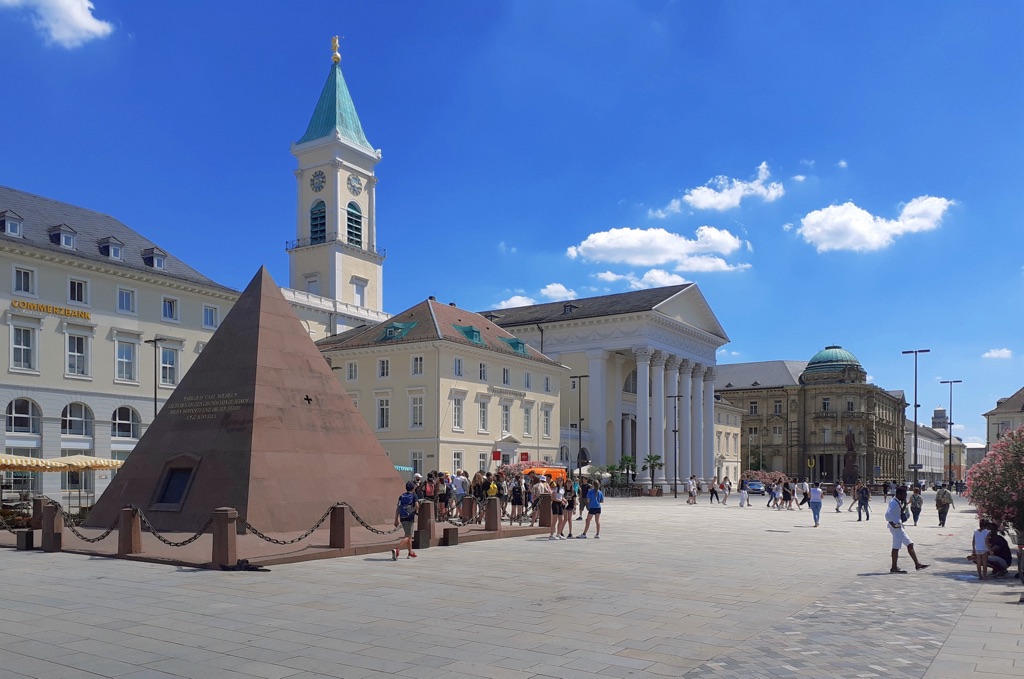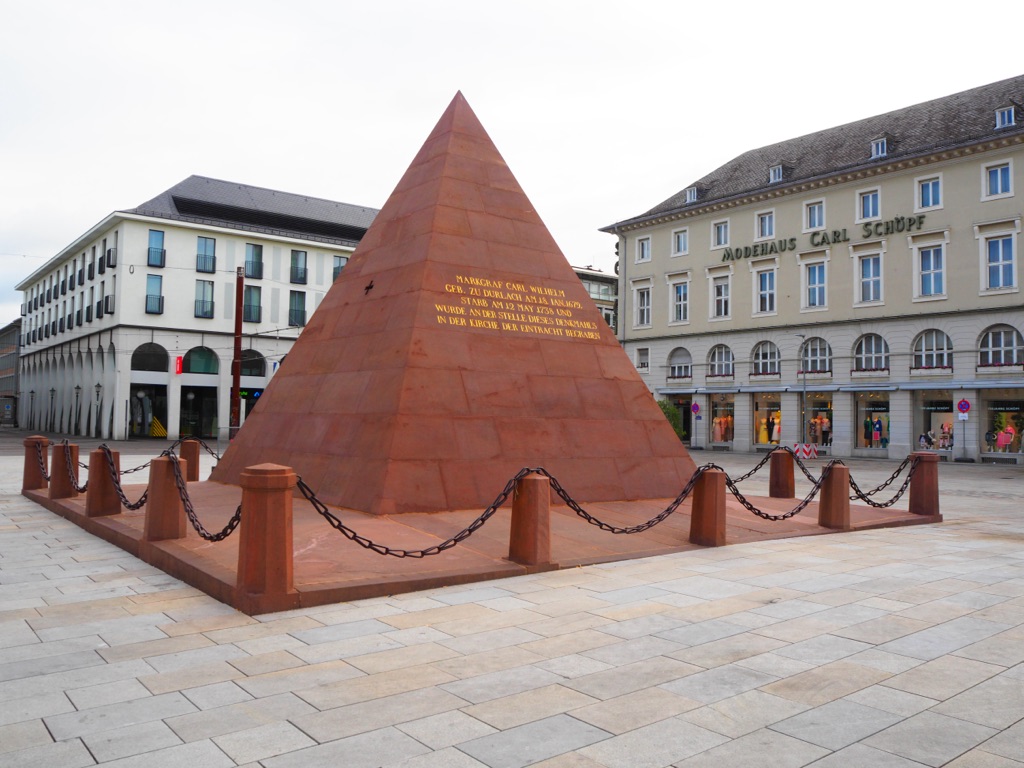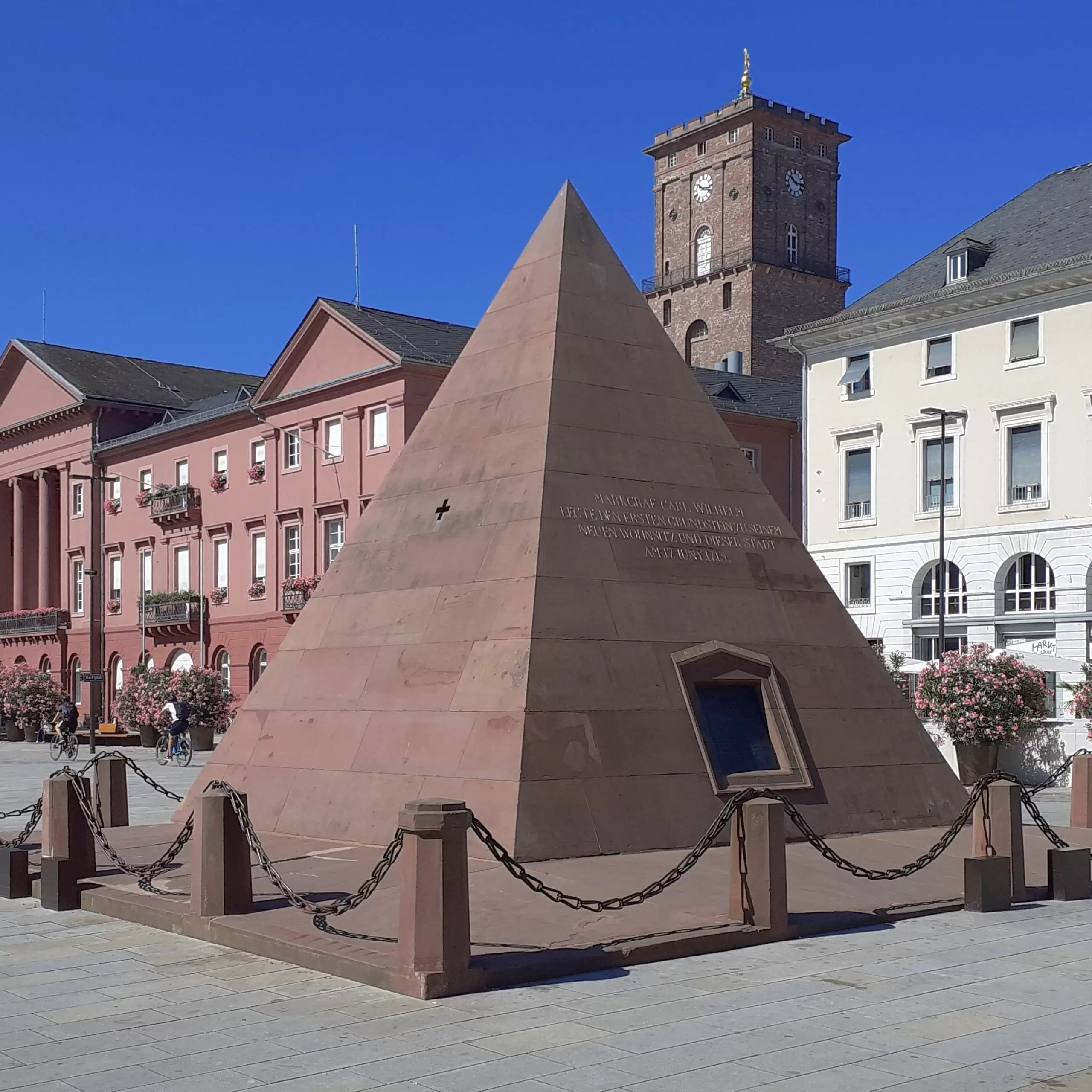The Karlsruhe Pyramid stands as a unique landmark in the heart of Karlsruhe, Germany. It is a pyramid-shaped tomb that marks the resting place of the city’s founder, Margrave Charles III William of Baden-Durlach. Constructed between 1823 and 1825, the pyramid is made of red sandstone and is situated in the market square of Karlsruhe, where the city’s original palace once stood. This intriguing structure is not only a historical monument but also a symbol of the city’s layout, which fans out from the pyramid like the rays of the sun.
Get your dose of History via Email
Historical Background of Karlsruhe Pyramid
The Karlsruhe Pyramid is a testament to the city’s founder, Margrave Charles III William of Baden-Durlach. He established Karlsruhe in 1715, and upon his death in 1738, his remains were initially laid to rest in the church of the palace. However, the church was demolished in 1807, and the need for a new burial site arose. an architect, designed the pyramid to serve as a temporary tomb. Eventually, it became the permanent sepulcher of the Margrave. The pyramid’s construction began in 1823 and concluded two years later.
Interestingly, the pyramid was not the only structure built over the founder’s grave. Initially, a wooden pyramid marked the spot. It stood until the stone pyramid replaced it. The Karlsruhe Pyramid is not only a burial monument but also a central point in the city’s design. The city’s streets radiate from the pyramid, highlighting its significance in urban planning.

Throughout its history, the pyramid has witnessed the evolution of Karlsruhe. It has remained untouched even as the city developed around it. The pyramid has not been the scene of any major historical events, but it has been a silent observer of the city’s growth and changes over the centuries.
The Karlsruhe Pyramid is unique in Germany. It is one of the few examples of Egyptian Revival architecture in the country. This style became popular in the early 19th century, inspired by the West’s fascination with Ancient Egypt. The pyramid’s design reflects this trend and adds a touch of exoticism to the city’s architecture.
Today, the Karlsruhe Pyramid is a protected monument. It is a point of interest for both locals and tourists. The city respects the pyramid as a symbol of its heritage and as the final resting place of its founder. It stands as a reminder of the city’s origins and the vision of its creator.
About Karlsruhe Pyramid
The Karlsruhe Pyramid is a striking example of Egyptian Revival architecture. It is constructed from red sandstone, a material commonly found in the region. The pyramid’s design is simple yet elegant, with a square base and a pointed top, resembling the tombs of ancient Egyptian pharaohs.
The pyramid’s dimensions are modest, standing at a height of approximately 6 meters. Despite its size, it commands attention in the market square. The pyramid’s red hue contrasts with the surrounding buildings, making it a focal point in the cityscape.
Architect Friedrich Weinbrenner, who was responsible for much of Karlsruhe’s classical architecture, designed the pyramid. His work is evident in the pyramid’s precise geometric form and the harmony it creates with the city’s layout. The pyramid’s construction was a technical achievement for its time, showcasing the skill of local craftsmen.

Over the years, the pyramid has undergone restoration to preserve its condition. These efforts ensure that the pyramid remains a durable symbol of the city’s past. The restoration work has been careful to maintain the pyramid’s original appearance, respecting its historical significance.
The Karlsruhe Pyramid is not only a burial monument but also an integral part of the city’s identity. It is a popular spot for photographs and a starting point for many city tours. The pyramid continues to be a source of pride for the residents of Karlsruhe, embodying the city’s history and architectural heritage.
At a glance
- Country: Germany
- Civilization: Modern, 19th-century German
- Age: Constructed between 1823-1825 AD

